May 8th Exam 5/6
1/62
There's no tags or description
Looks like no tags are added yet.
Name | Mastery | Learn | Test | Matching | Spaced |
|---|
No study sessions yet.
63 Terms
Viruses are
Obligate intracellular parasites (Can infect anything)
General size of viruses
1-2 um (Needs electron microscope)
Viruses have
Central core or a covering
Capsids
Protein that encloses and protects their nucleic acid
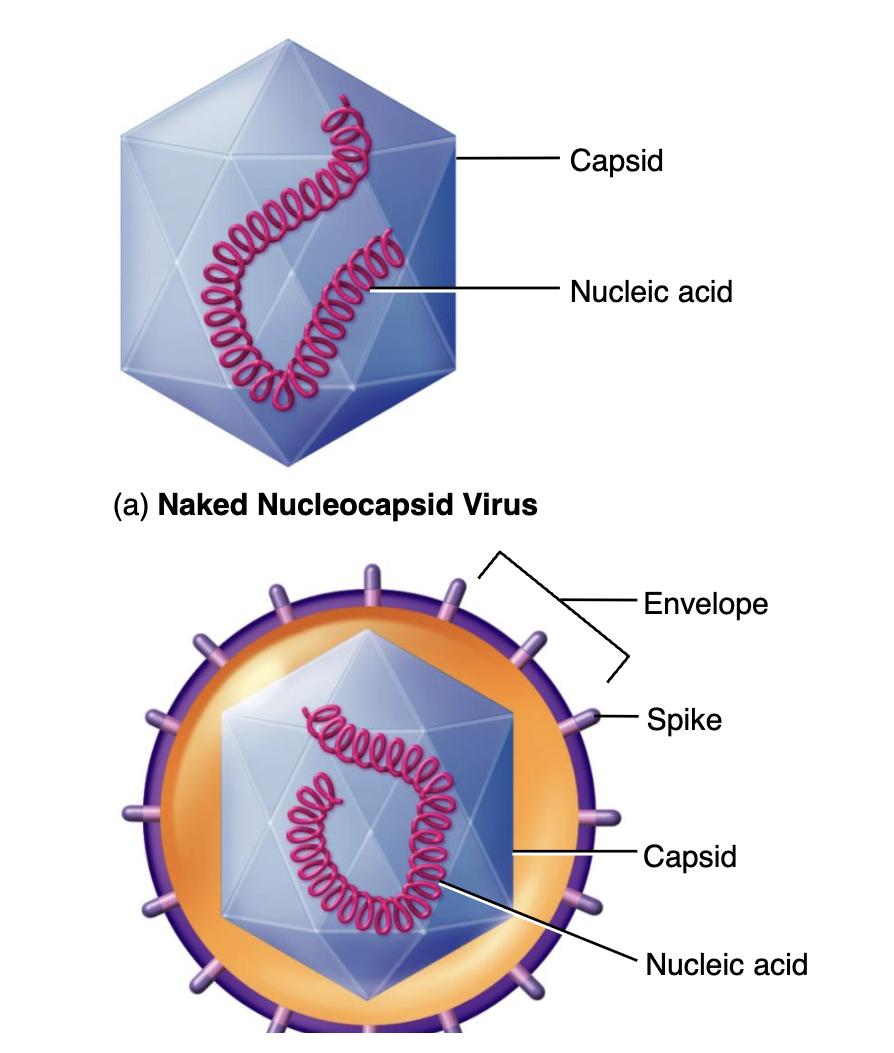
Nucleocapsid
Capsids + Nucleic acid
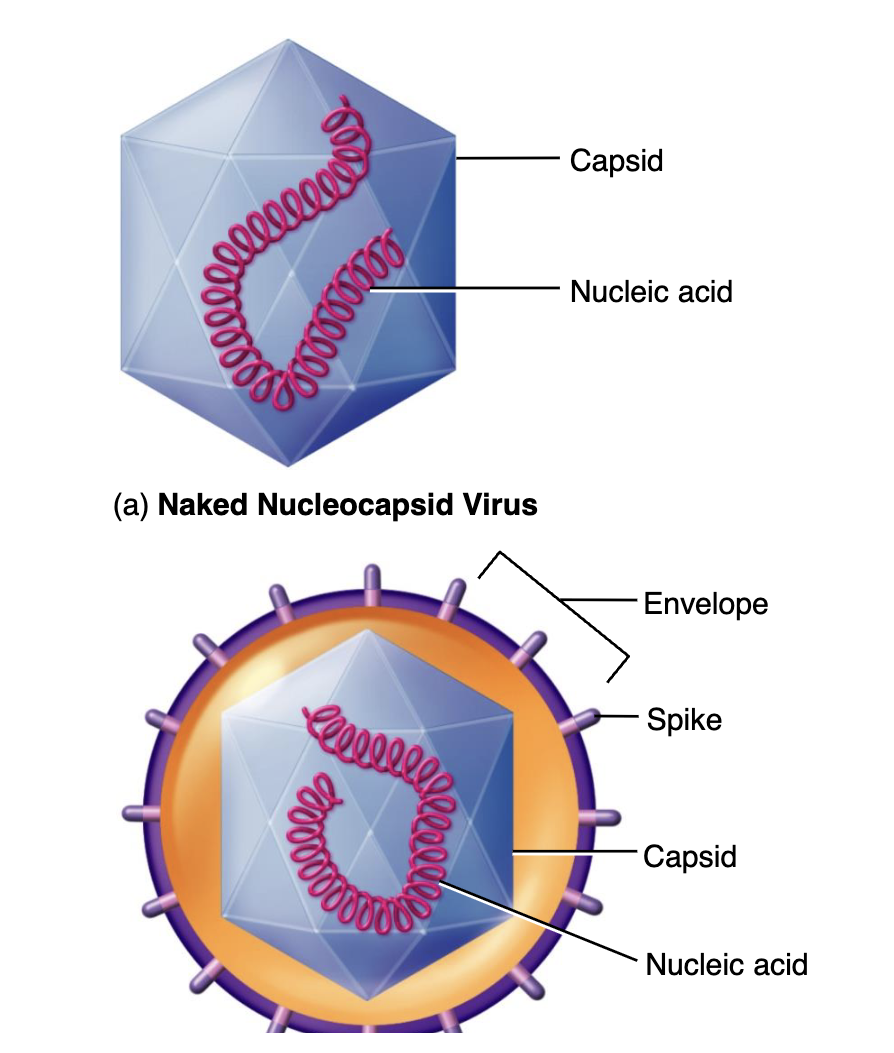
Envelope
External covering that acts as a extra layer of protection for viruses

Naked
A virus that doesn’t have a envelope
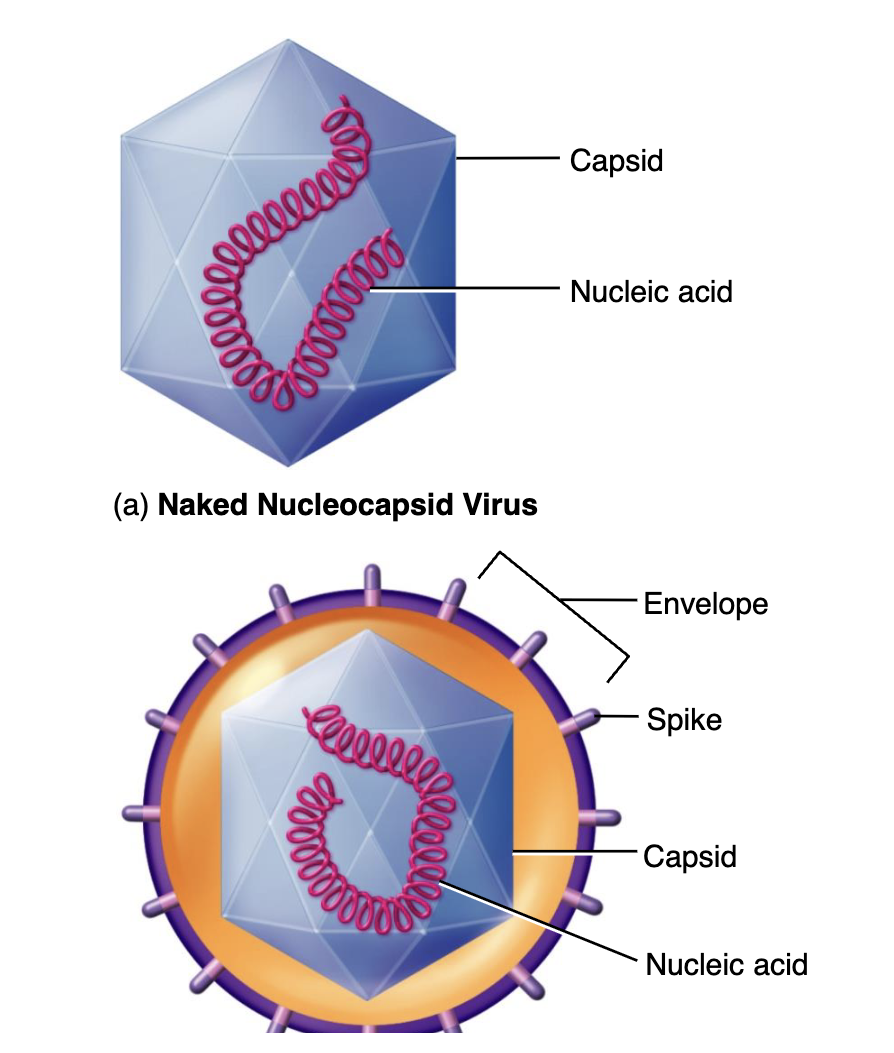
Capsomers
Identical protein subunits that makes up a capsid

Viral envelope
Mostly animal viruses, acquired when the virus leaves the host cell, has spikes on the outside used to attach to host cells
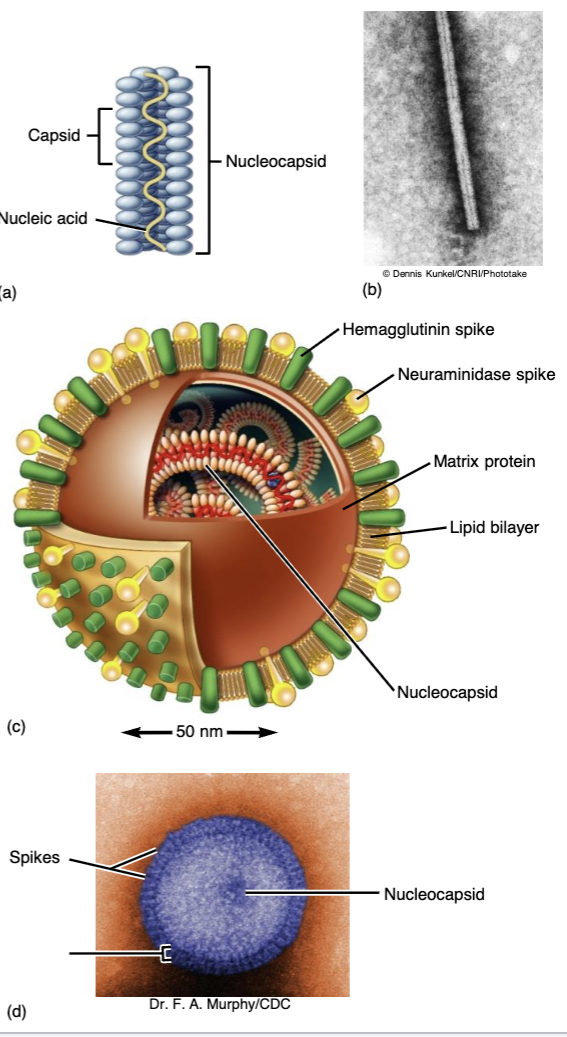
Complex/Atypical Viruses are
complex viruses
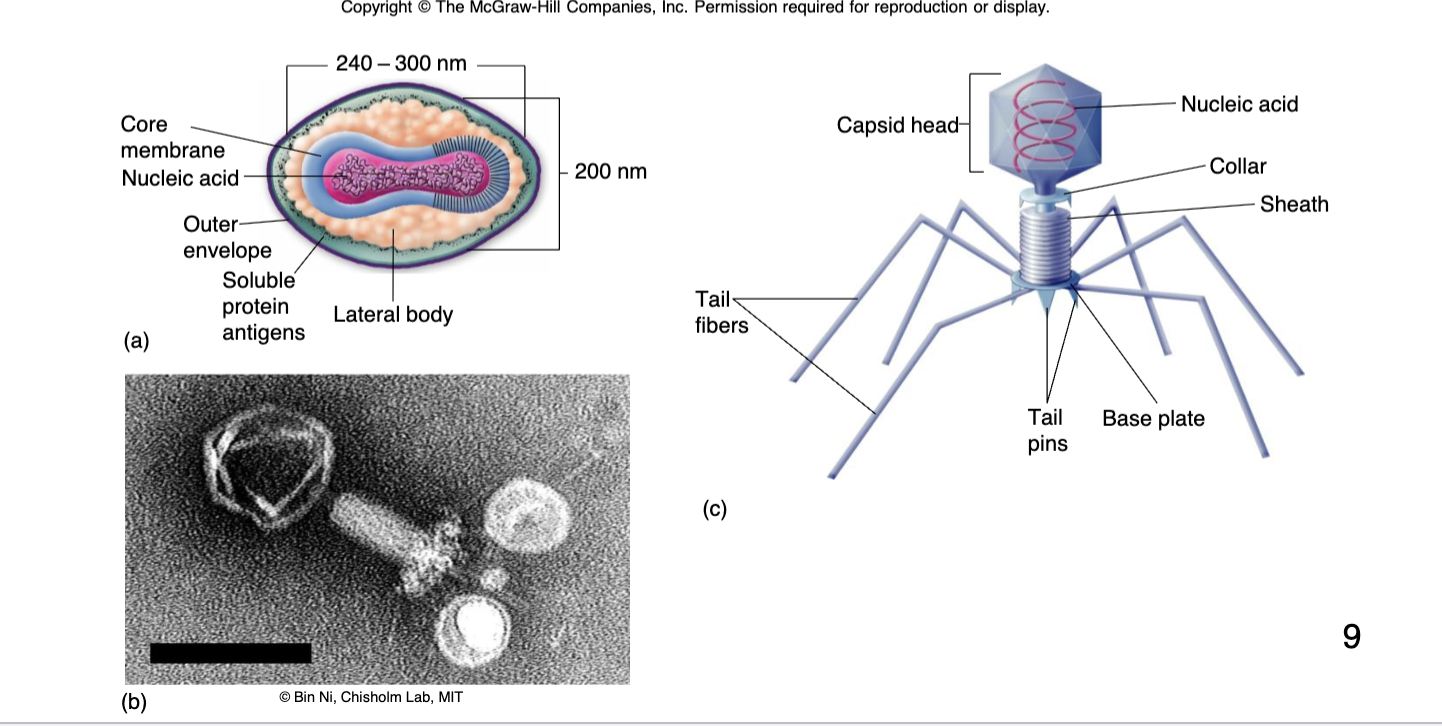
Bacteriophages
Viruses that infect bacterial cells (Complex/Atypical virus)
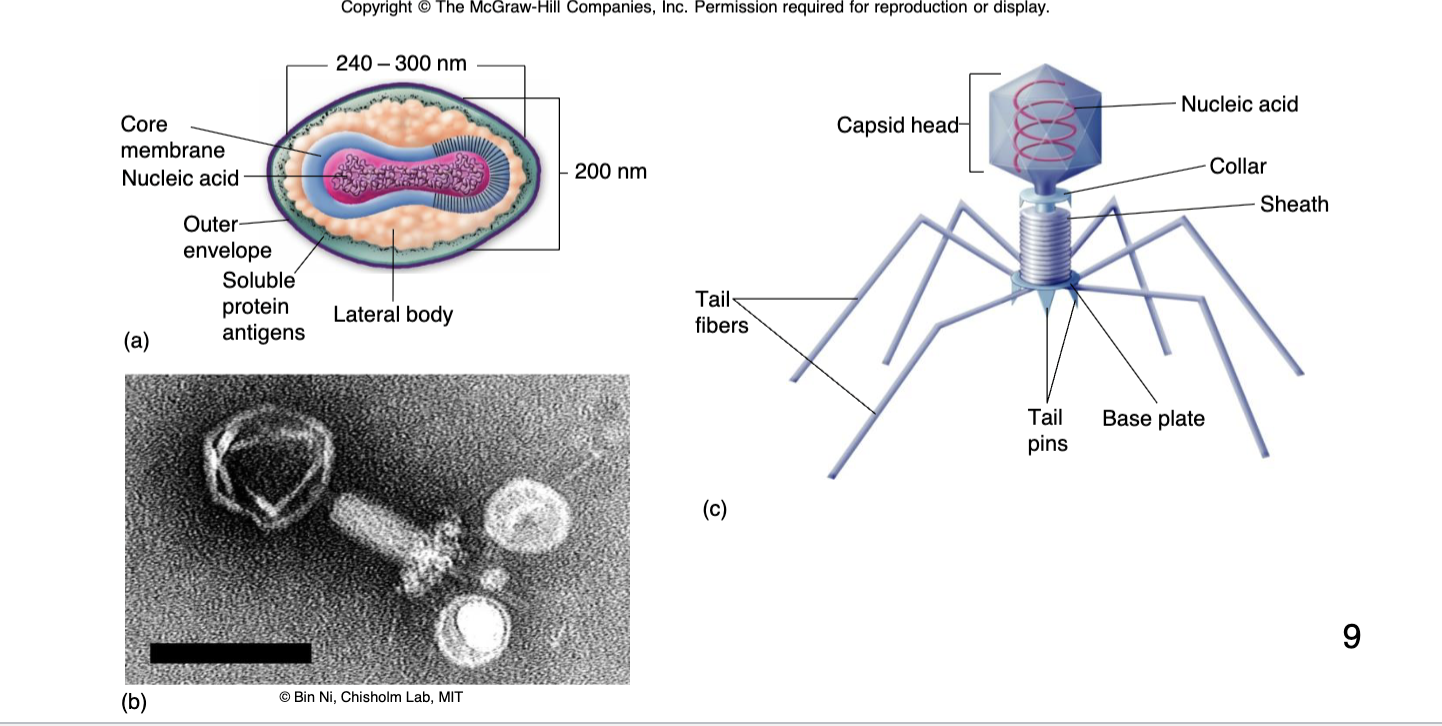
Poxviruses
Complex/Atypical virus that infects bacterial cell
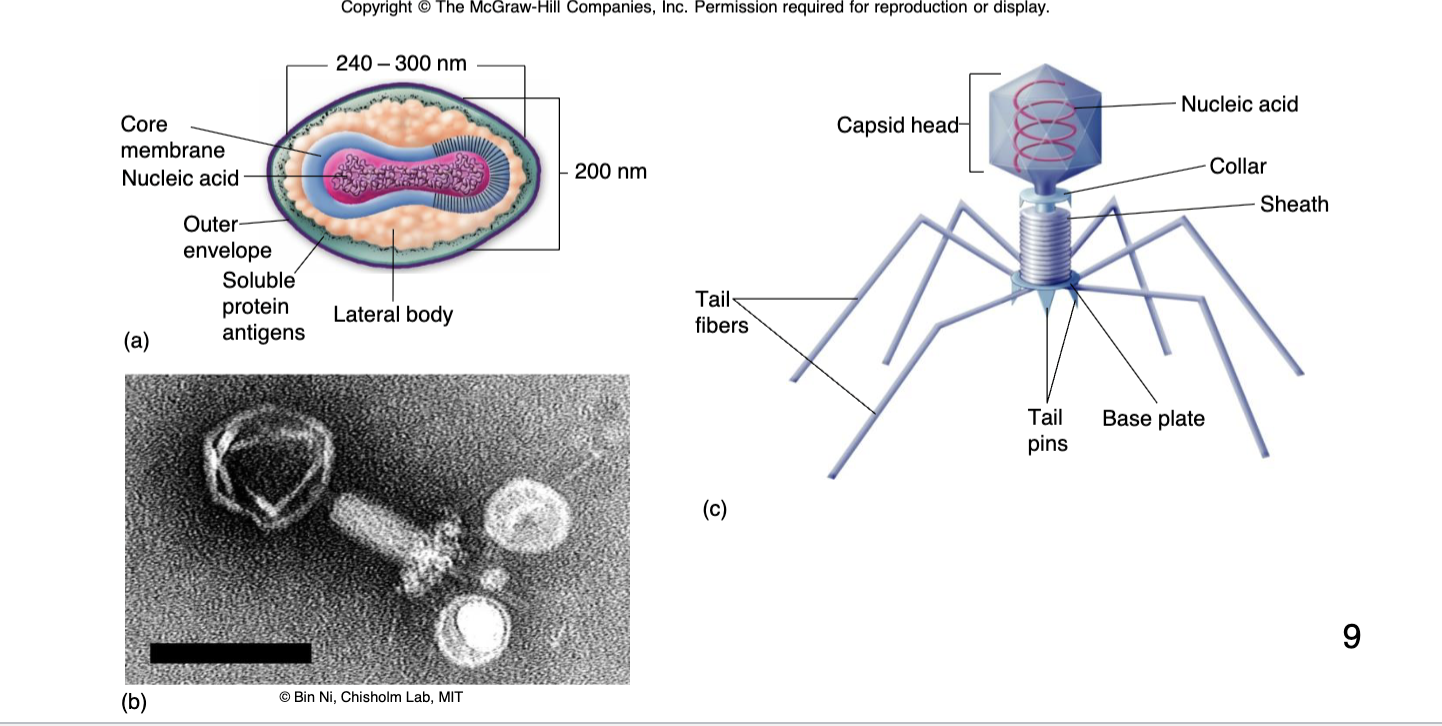
Viral genome
Either DNA or RNA, not both that’s used by viruses to infect host cells to create more viruses
DNA viruses
Usually double stranded (ds) but may be single
stranded (ss), Circular or linear
RNA viruses
Usually single-stranded, may be double-stranded, may
be segmented into separate RNA pieces
Enzymes in viruses
Polymerase, Replicase, and Reverse Transcription
Adsorption (1/6)
binding of virus to specific molecules on
the host cell
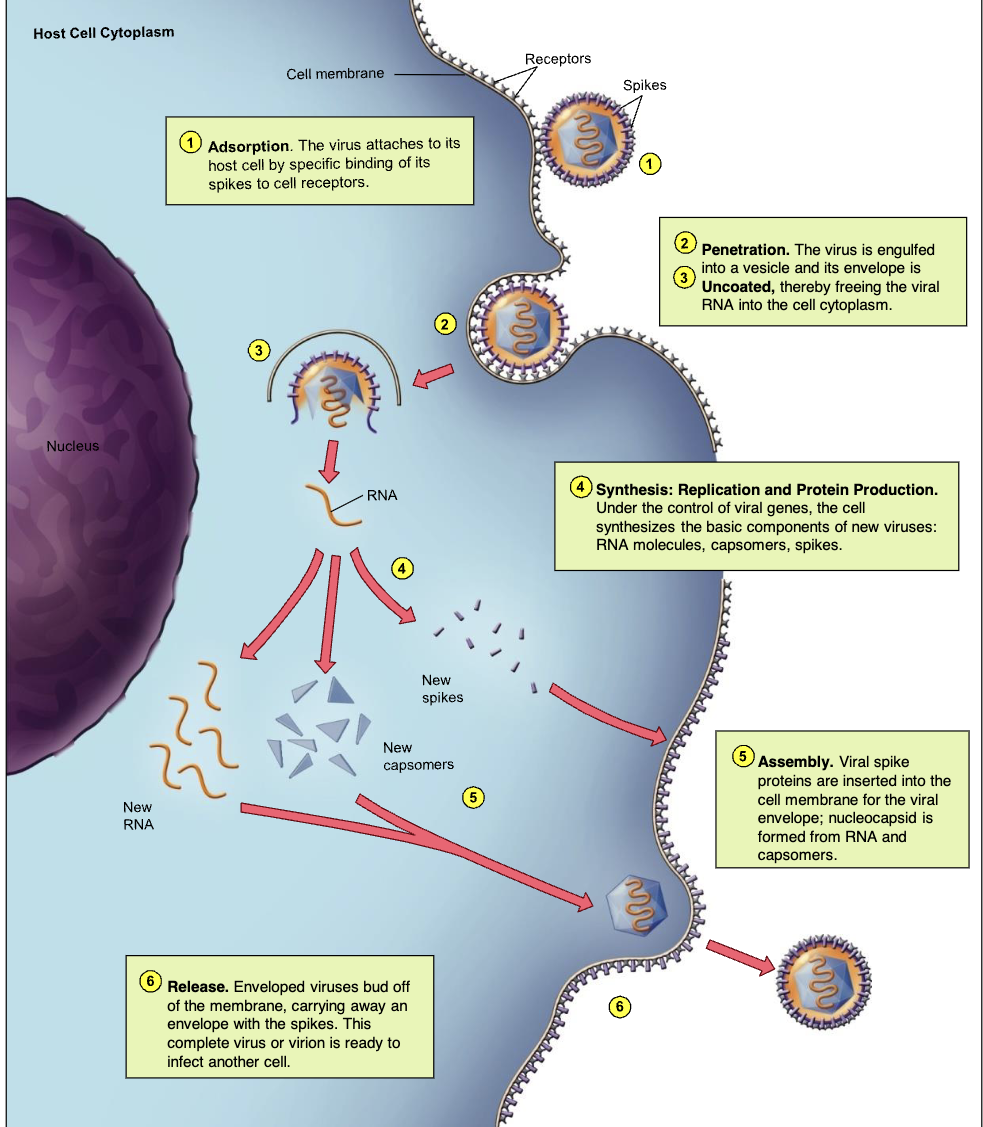
Penetration (2/6)
genome enters the host cell
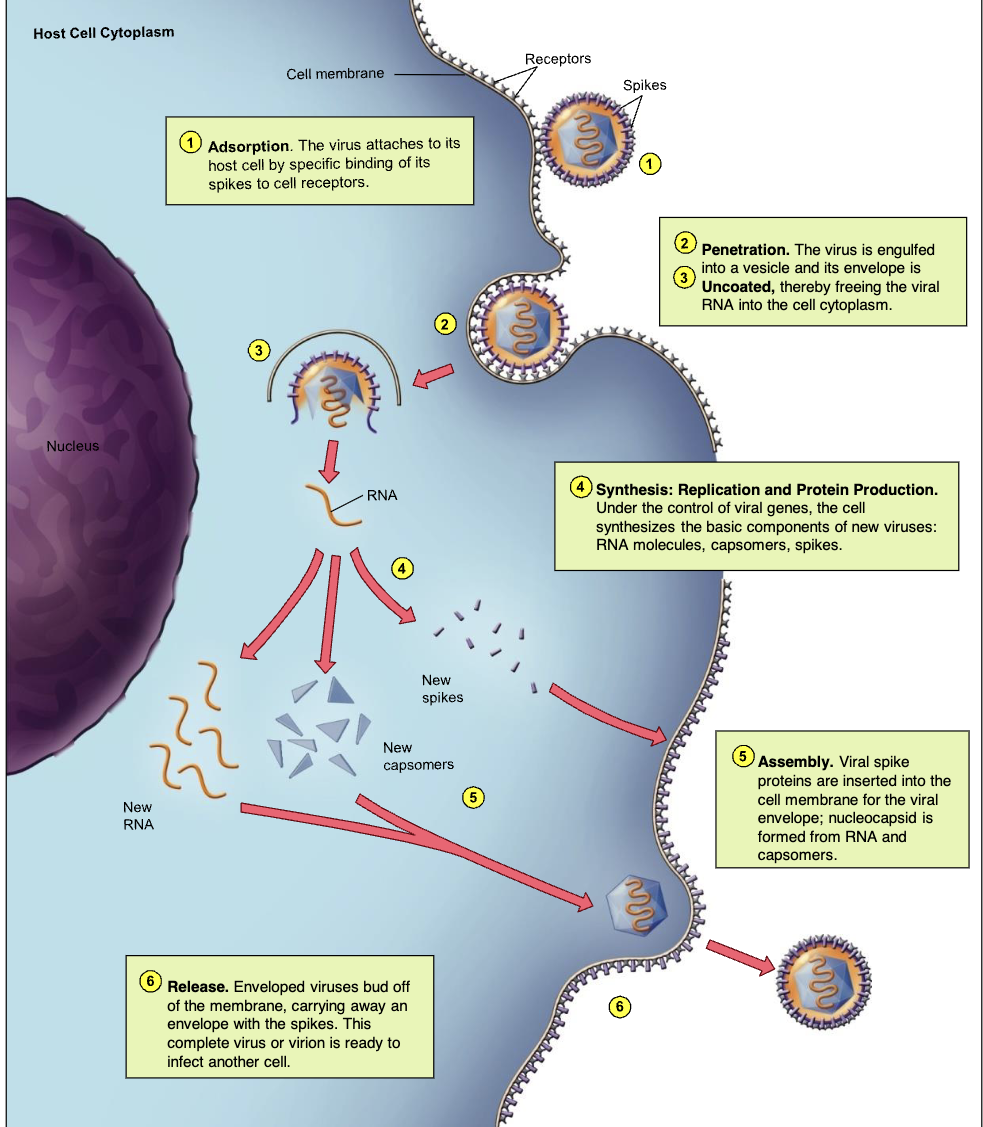
Uncoating (3/6)
the viral nucleic acid is released from the
capsid
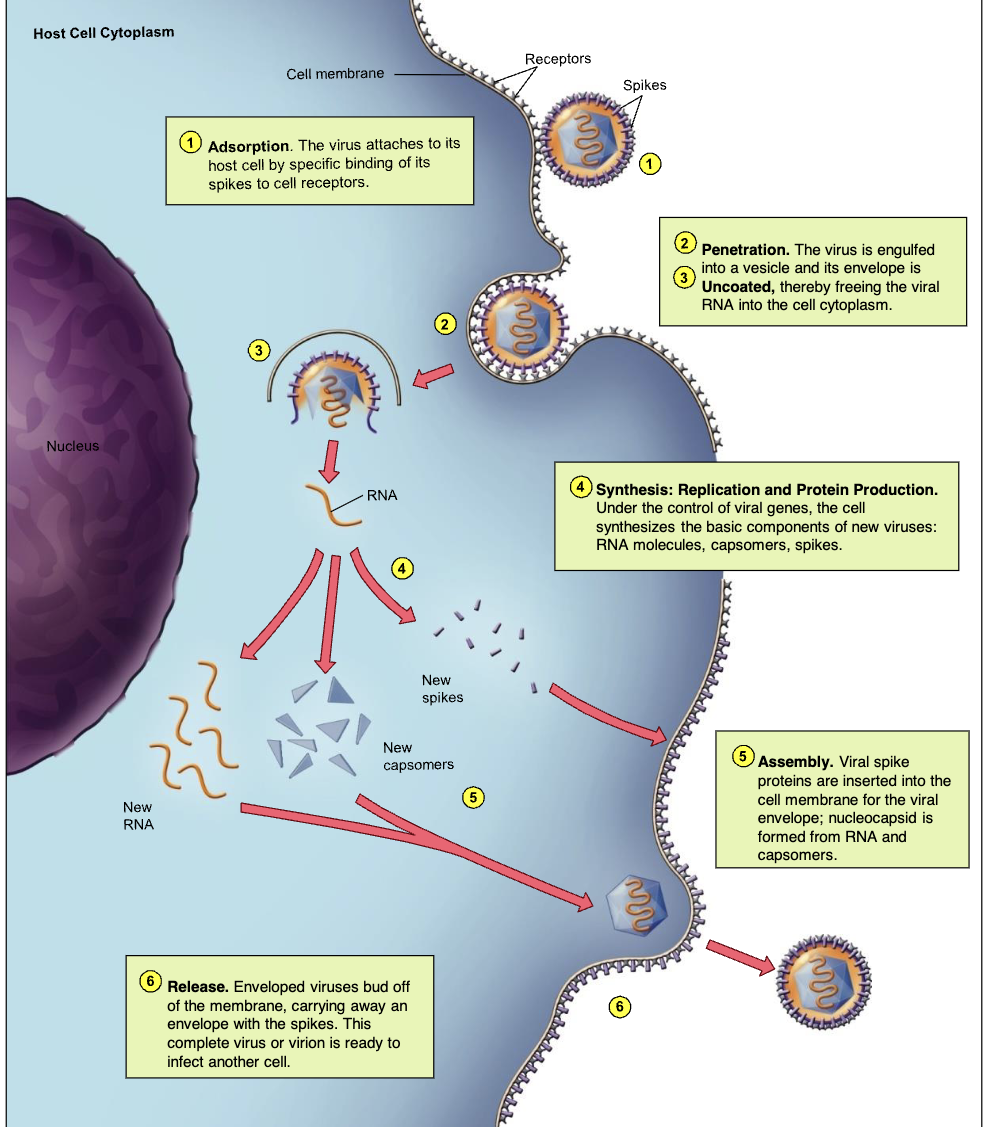
Synthesis (4/6)
viral components are produced
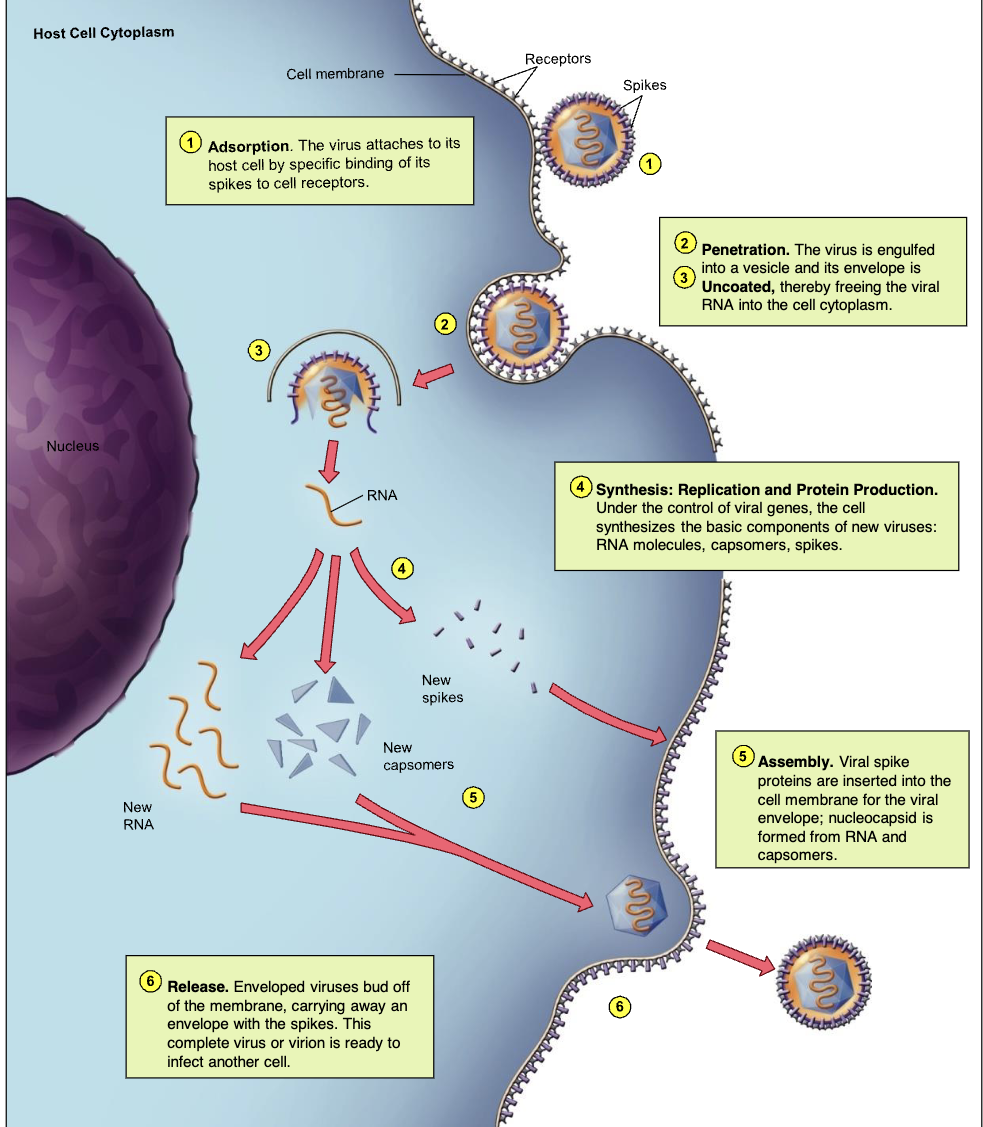
Assembly (5/6)
new viral particles are constructed
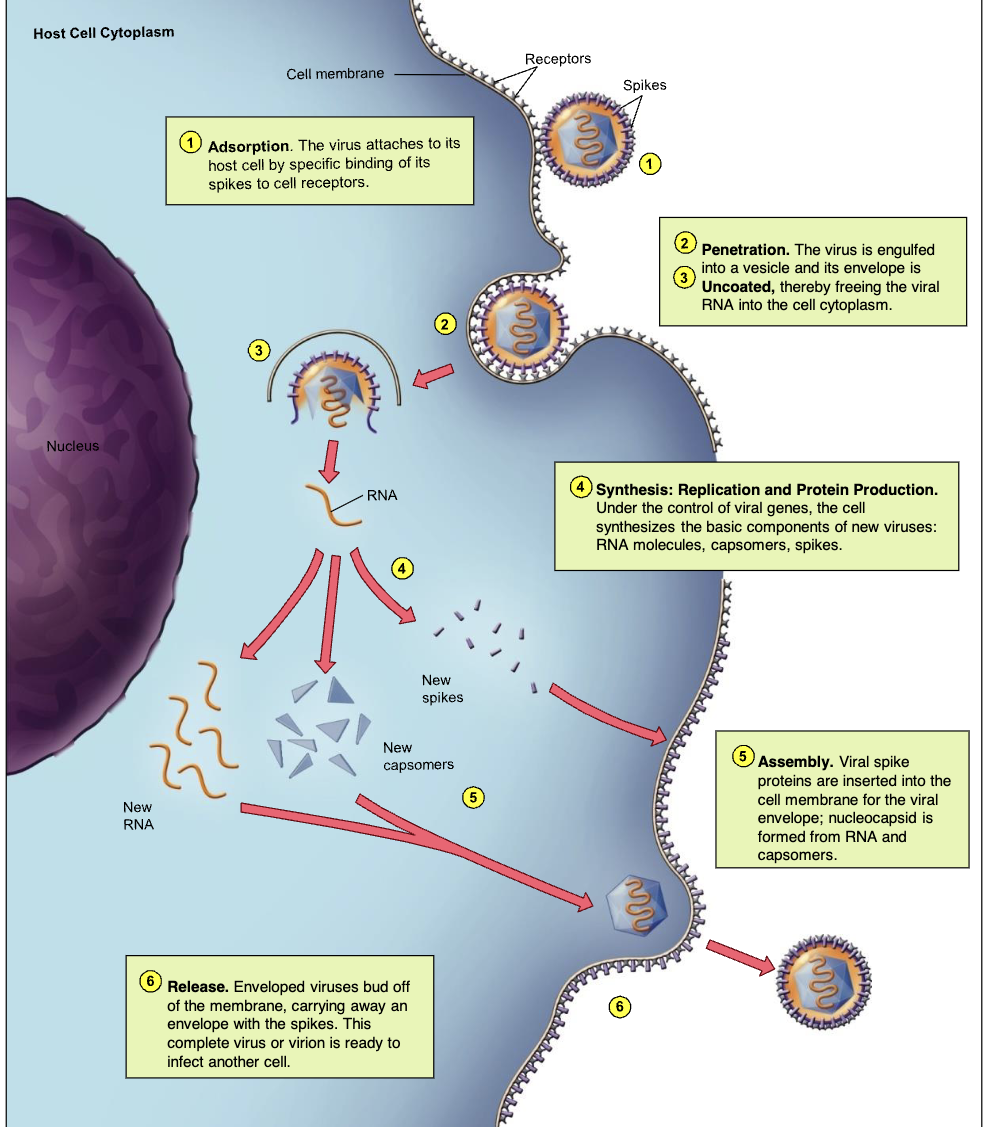
Release (6/6)
assembled viruses are released by
budding (exocytosis) or cell lysis

Host range
Variety of host cells that a virus can infect

Endocytosis
entire virus is engulfed and
enclosed in a vacuole or vesicle (Penetration/Uncoating)

Fusion
envelope merges directly with
membrane resulting in nucleocapsid’s
entry into cytoplasm (Penetration/Uncoating)

DNA viruses generally are replicated and
assembled in the
nucleus
RNA viruses generally are replicated and
assembled in the
cytoplasm
Budding/Exocytosis (Release 6/6)
nucleocapsid binds to membrane
which pinches off and sheds the
viruses gradually; cell is not
immediately destroyed
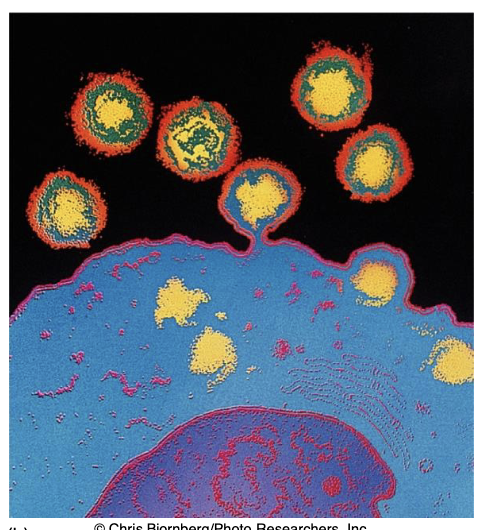
Lysis (Release 6/6)
nonenveloped and
complex viruses released when
cell dies and ruptures

Cytopathic effects
Virus-induced damage to host cells that alters the cell, i.e., becoming a cancer cell, a misshapen cell, inclusion bodies, altered DNA, cell lysis, cells clumping together, and evidence left in the cytoplasm
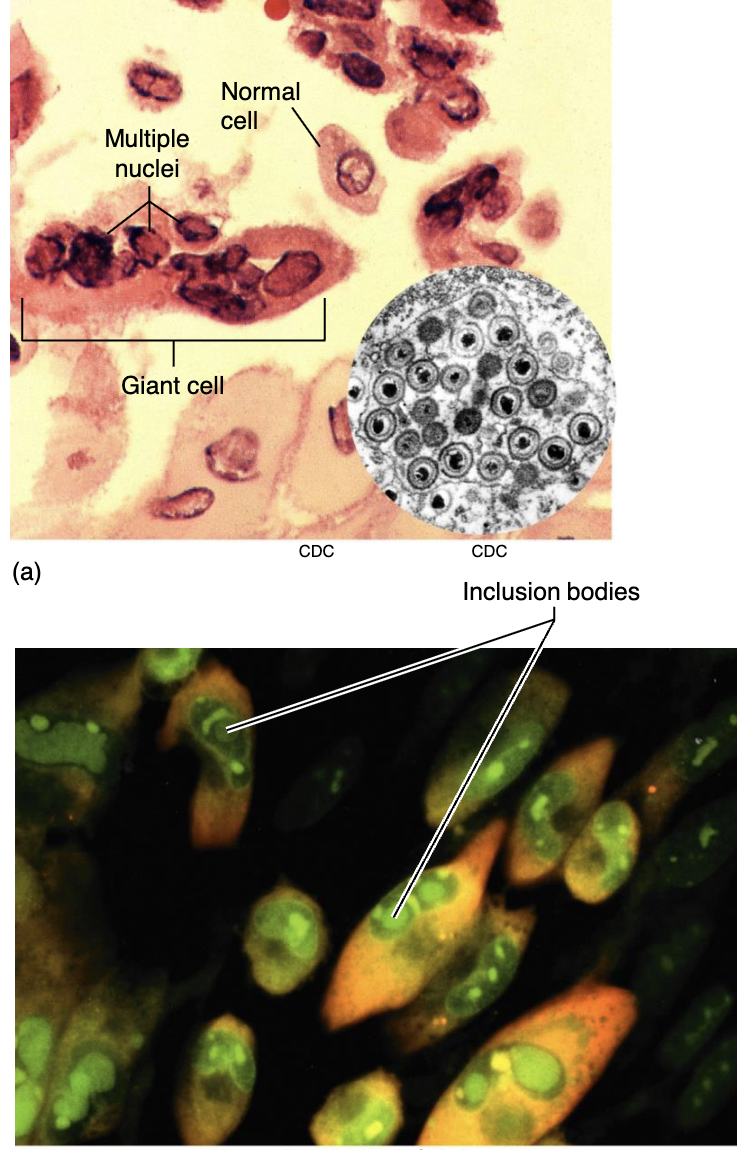
Persistent infections
When cell harbors the virus but doesn’t lysis immediately
Chronic late state
are persistent infections
Transformed cells
Cells that have abnormal behavior via viral infections that can cause cancer, uncontrolled growth, alters in chromosomes, etc.
Oncoviruses
Mammalian viruses that are able to induce tumor growth
Method for growing viruses
Cell culture (For observation and effects of cytopathic effects) bird embryo (Ideal for virus growth), and live animal inoculation (Only when necessary)
Prions
Misfolded proteins, infectious particles that contain no nucleic acid, attacks the nervous system, hard to get rid of
Scrapie
Prions in sheep/goats
Bovine epongiform encephalopathies (Mad cow disease)
Prions in cows
Wasting disease
Prions in elk
Creutzfeldt-Jakob
Syndrome
Prions in humans
Characteristics of viruses are
Rashes, fever, muscle aches, discomfort, and involves the respiratory system and lymph nodes
Porxviruses
Enveloped DNA virus, produce eruptive skin pustules (pocks or pox) that leaves scars, loves skin and connective tissues
Smallpox
First disease eradicated via vaccinations, spreads by skin contact/inhalation, causes fever/rashes
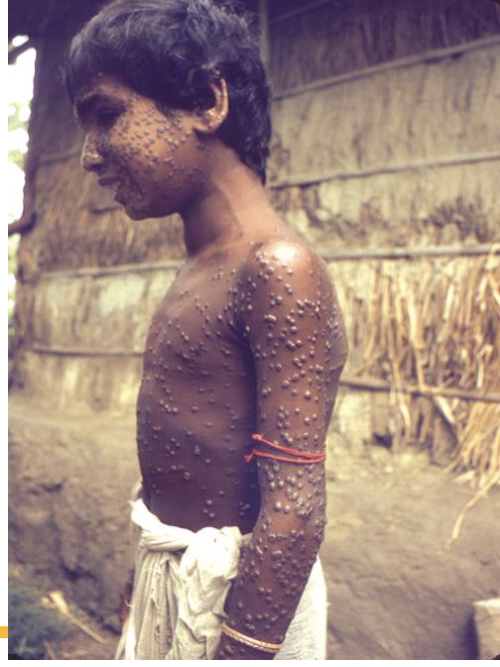
Variola major smallpox
Highly virulent, caused toxemia, shock, and causes blood to clot in the body (deadly)
Variola minor smallpox
Less virulent smallpox
Smallpox Vaccination
Single drop of vaccinia virus
punctured into the skin with a double-pronged needle
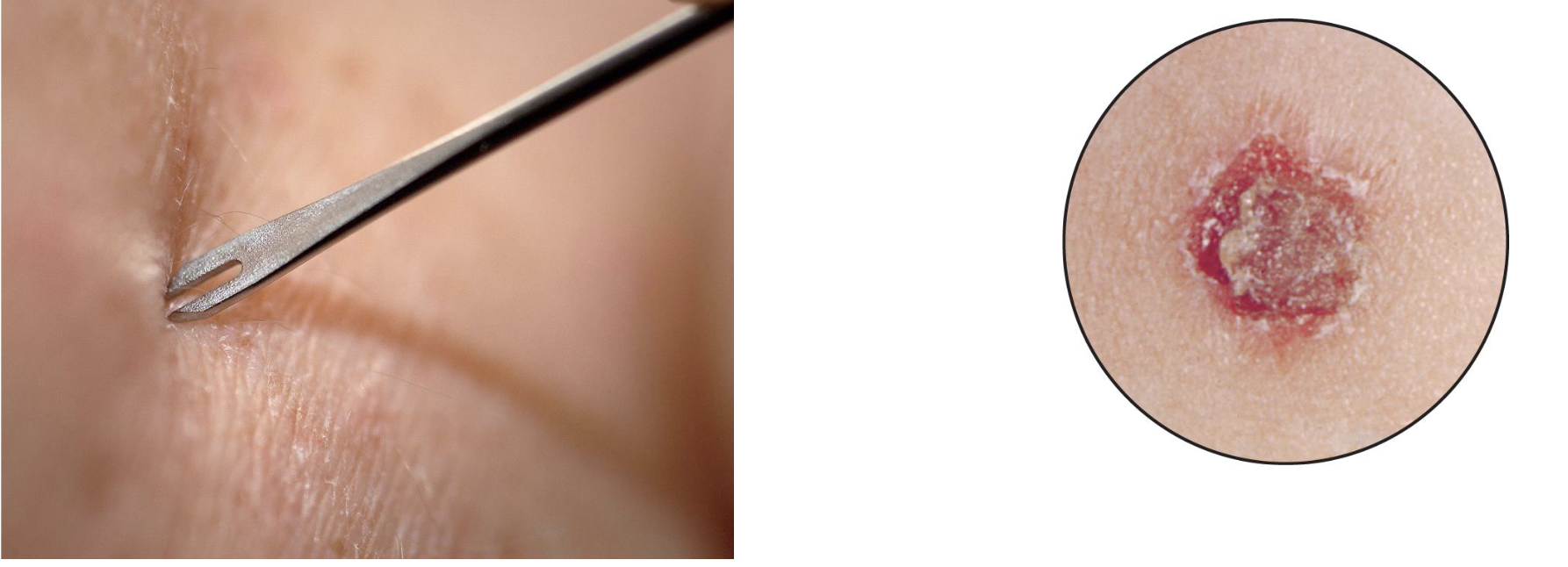
Humans can get poxviruses such as
cowpox and monkeypox
Herpesvirus
Enveloped DNA viruses that show latency and recurrent infection lives in sensory neurons of the immune system
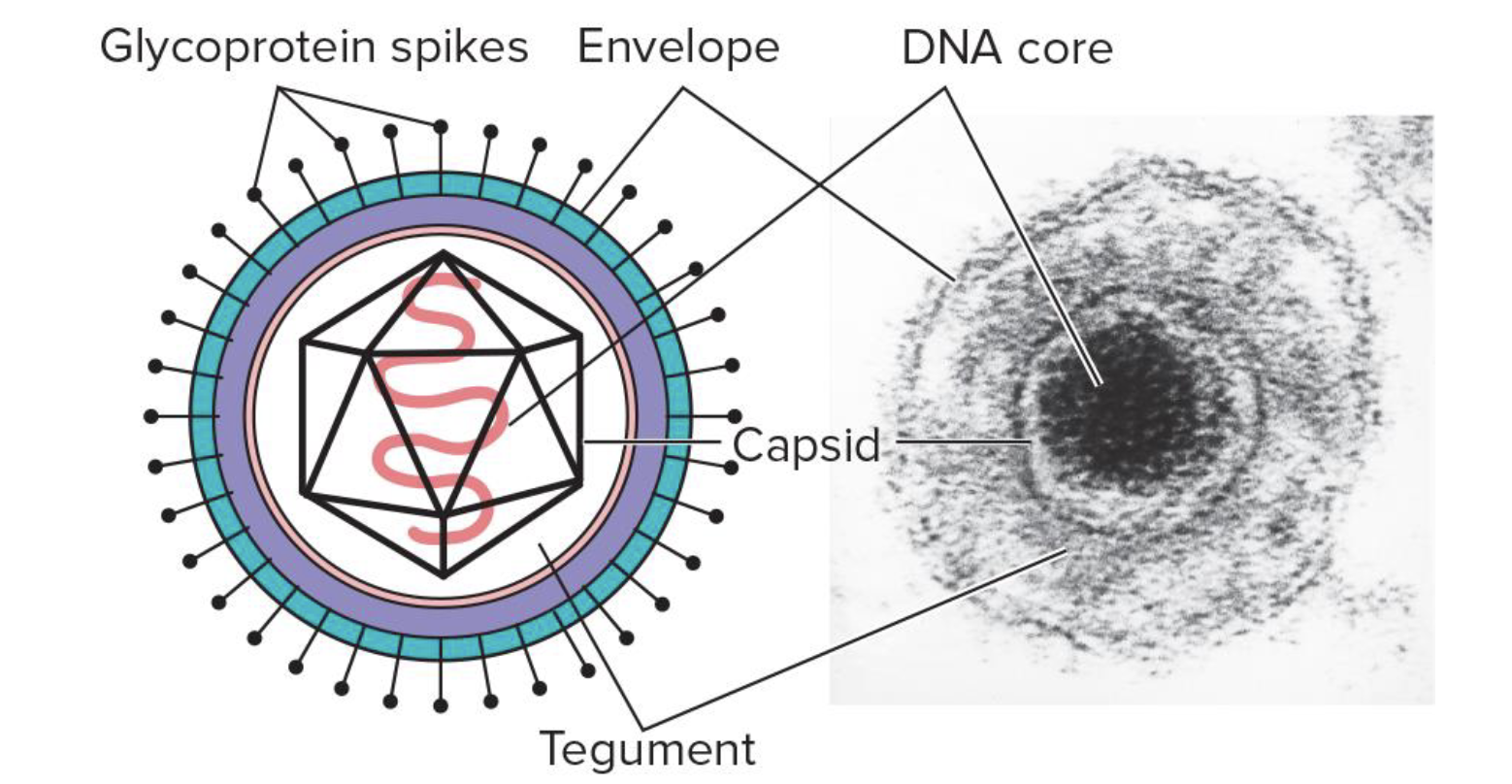
Herpes Simplex Virus 1
Most common herpes virus, leaves cold sore and blisters around the mouth
Herpes Simplex Virus 2
Sexually transmitted herpes that leaves lesions on the genitals, can spread without visible lesions
Herpes labialis
Most common symptom, fever blister or cold sore
Herpetic gingivostomatitis
Inflammation in the oral cavity, gums, tongue, and lips
Herpetic keratitis
Inflammation of the eye, the virus travels to the optic nerve rather than the mandibular nerves
Herpetic whitlow (complication)
When Herpes penetrates the skin and causes a localized infection, usually on one finger, extremely painful and itchy
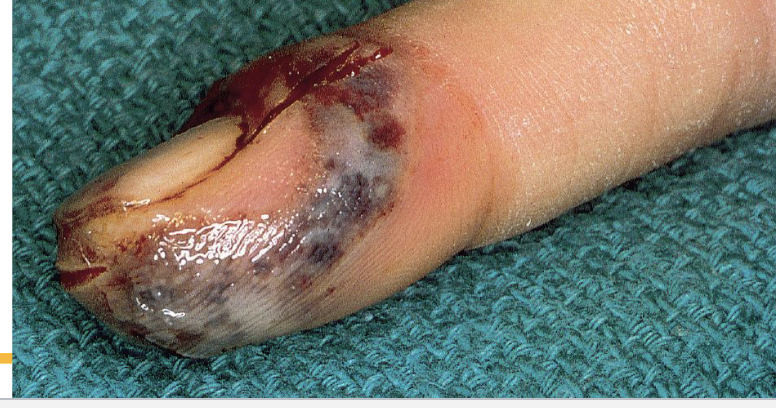
Herpes Simplex Virus 1 encephalitis
When Herpes cause inflammation of the brain (deadly)
Herpes Simplex Virus Treatment
Over the counter medication
Varicella-Zoster Virus
The highly contagious virus causes a primary infection, chickenpox (Varicella), and a reactivation infection, shingles (Herpes Zoster), lives in neurons and reactivates in the neurons and goes from spine to skin

Varicella-Zoster Virus Treatment
Live attenuated vaccine (Varivax) for chickenpox and
shingles
Epstein-Barr Virus
Ubiquitous virus; infects lymphoid tissue and salivary glands, spread by infected saliva, causes sore throat and high fever

Burkitt lymphoma
Cancer in cancerous B cells that causes the cheeks and jaw to swells, commonely found in African ancestry
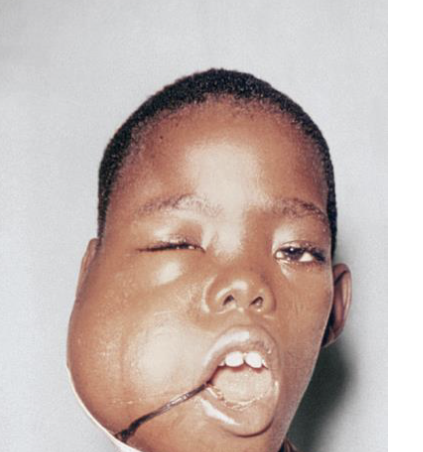
Nasopharyngeal carcinoma
Cancer of the nasopharynx, commonly associated with people of Chinese descent, involving a bleeding nose, blood saliva, etc